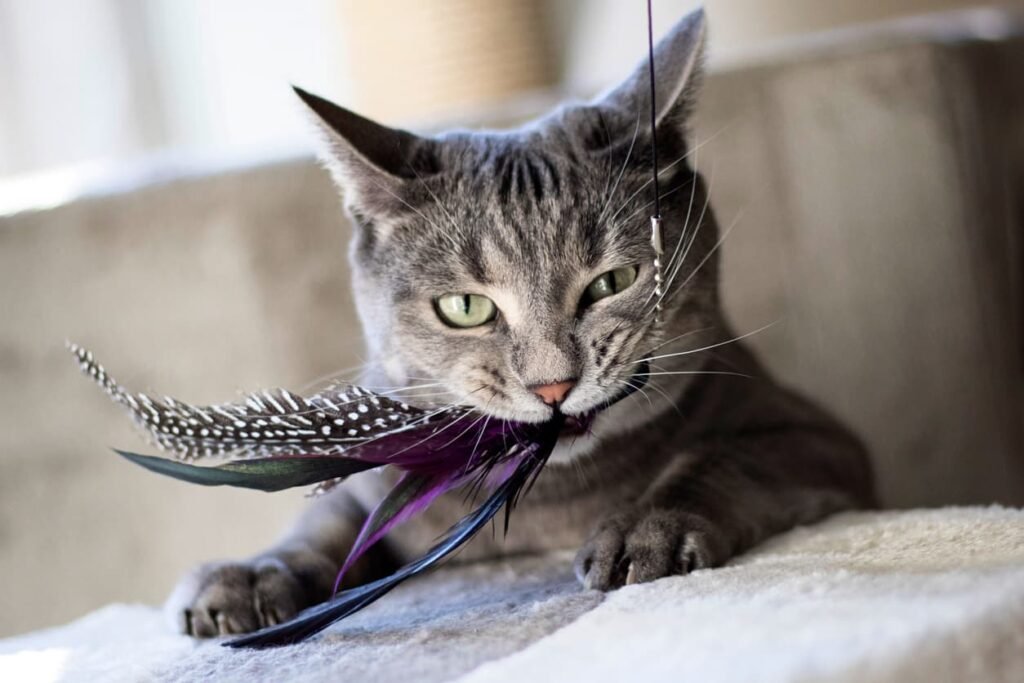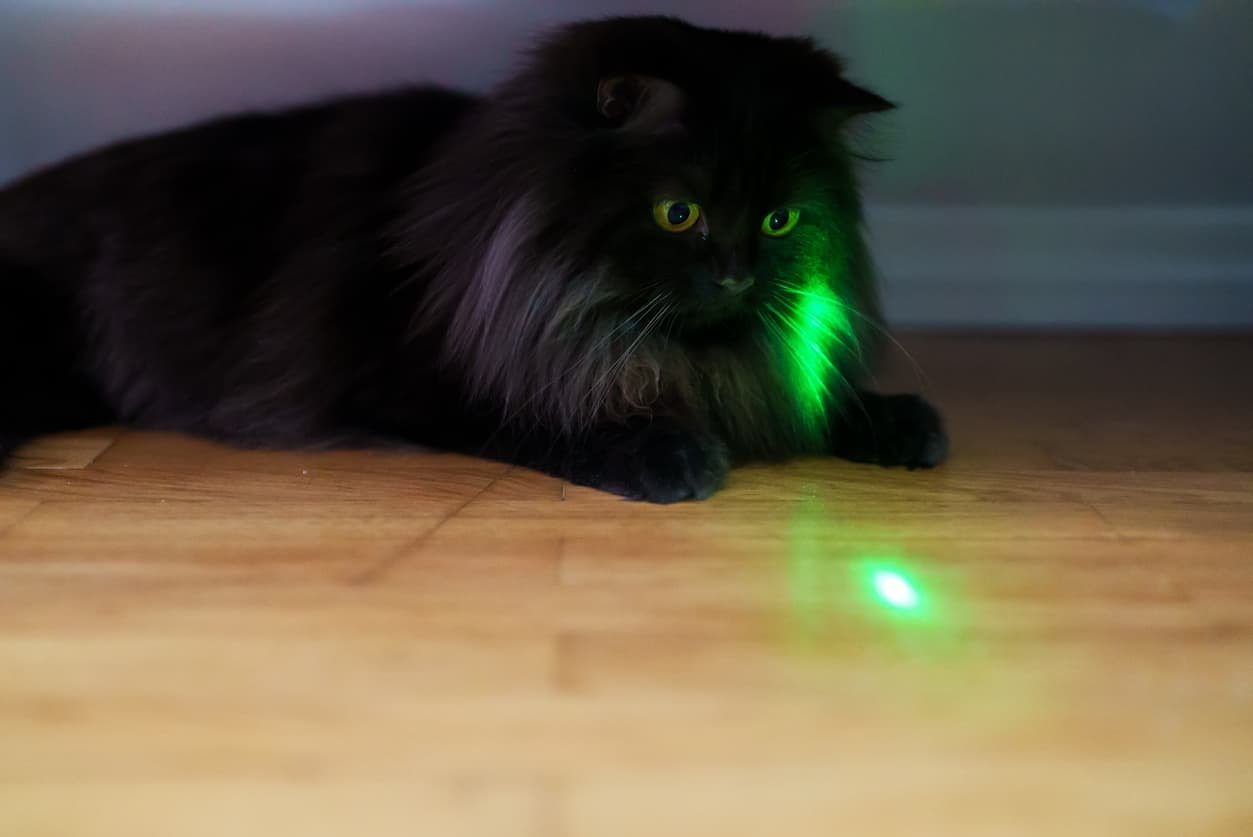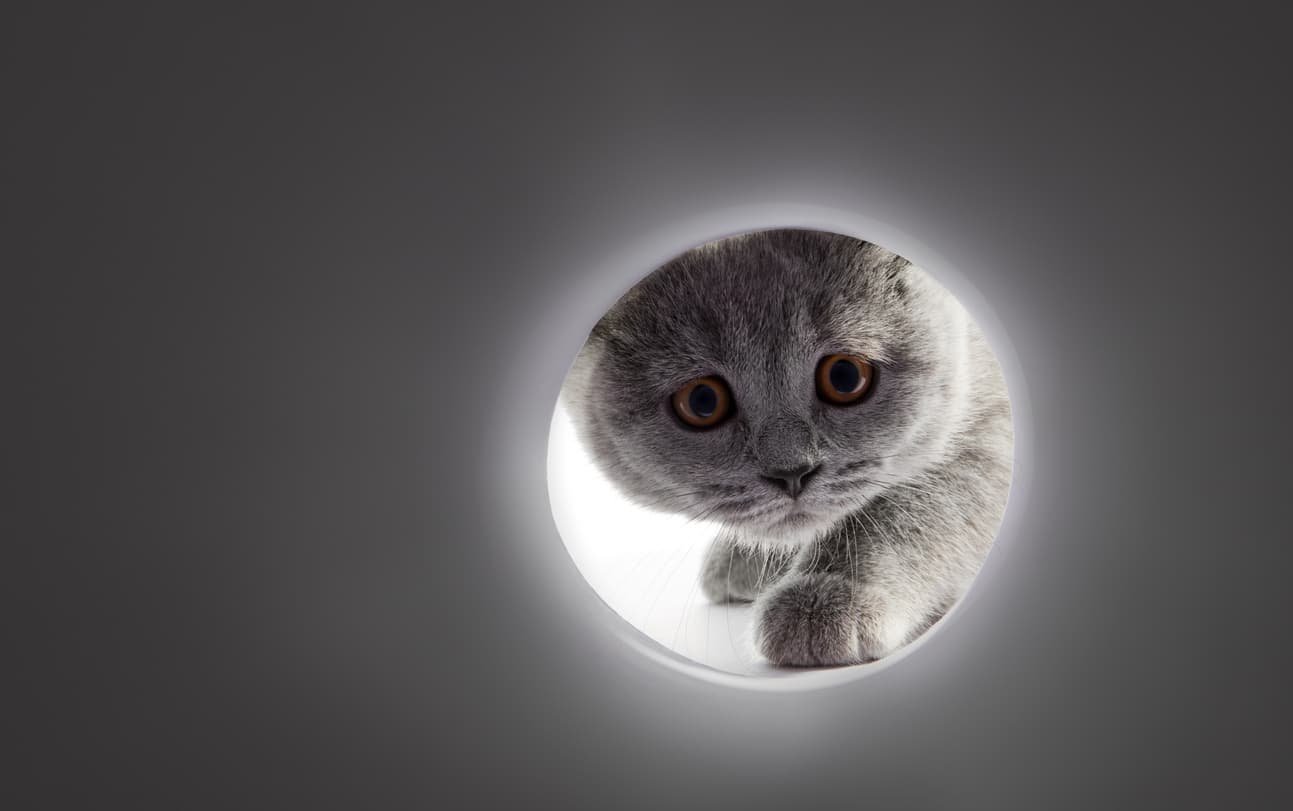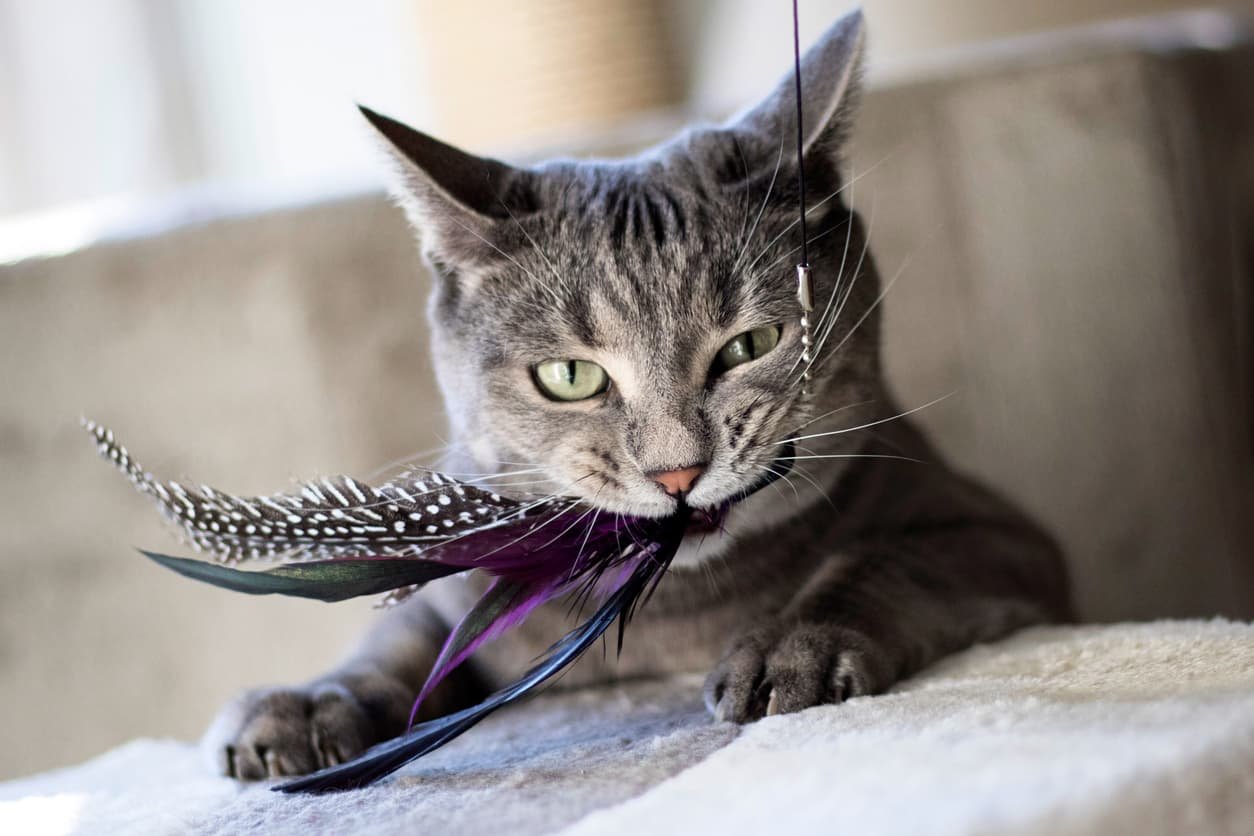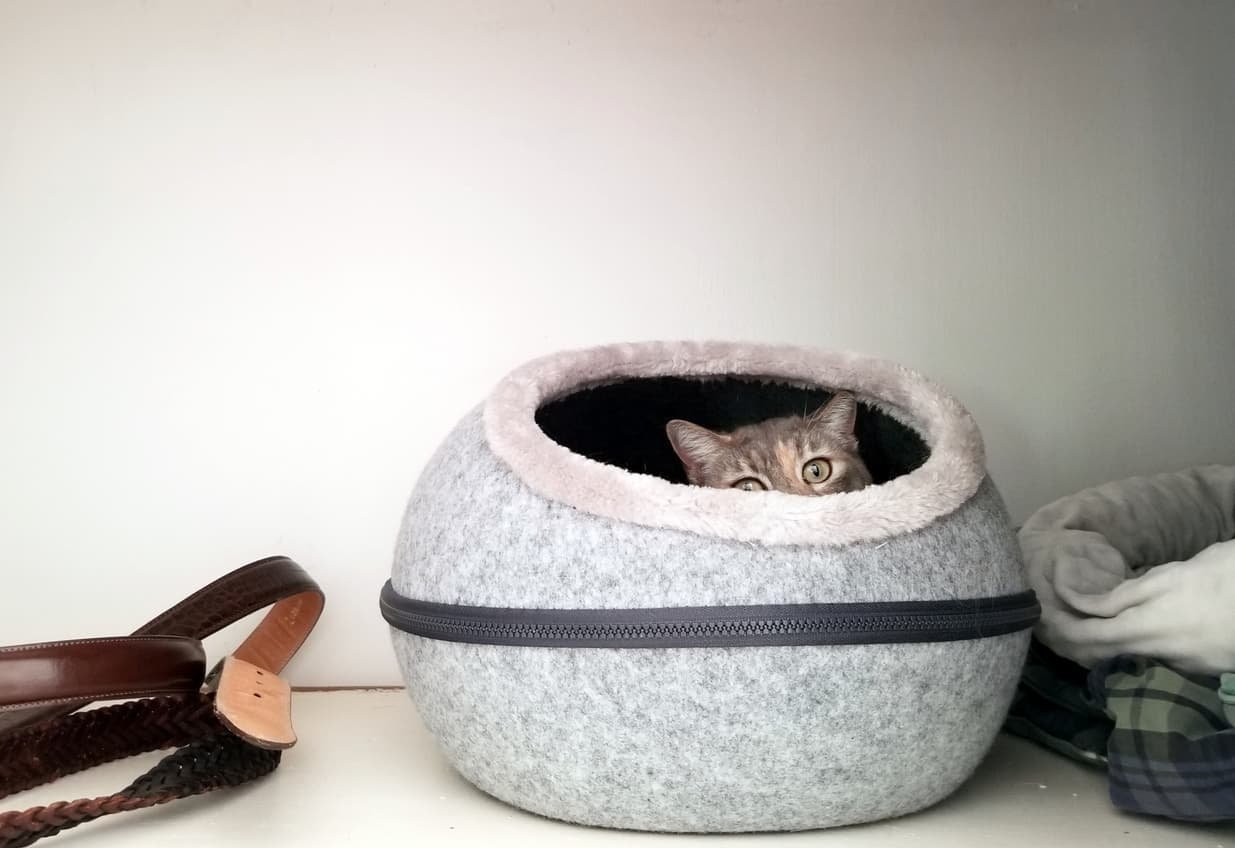If you’re a new pet parent wondering, “What kind of toys do cats need?”, you’re already on the right path to ensuring your feline friend lives a healthy, enriched life. The right toys stimulate your cat’s natural instincts, encourage exercise, and help prevent unwanted behaviors such as furniture scratching or excessive meowing. From the classic furry mouse at the end of a string to modern puzzle feeders and cat tunnel beds (link to cattunnelbed.com), there are endless types of toys designed to keep indoor cats active, entertained, and emotionally fulfilled. When it comes to buying cat toys, choosing the best cat toys depends on your pet’s preferences, age, and personality.
This article explores what kind of toys do cats need, why toys are essential, and how to choose the best ones for your feline friend.
Table of Contents
ToggleUnderstanding Feline Instincts and Play Behavior
Cats are natural hunters. Even indoor cats retain the drive to stalk, chase, pounce, and bat at prey-like objects. This is where play becomes more than just entertainment—it becomes essential. Toys like the cat dancer rainbow cat charmer, wand toy, and laser toy imitate movements that trigger your cat’s hunting instincts. A furry mouse or balls of yarn can become a thrilling “prey” during a play session.
Play also helps tester kittens develop motor skills and coordination. Young cats in the testing period of their development especially benefit from a variety of textures and experiences—think cardboard scratchers, a plush cat toy with catnip, or a maze-like cat tunnel bed. These provide tactile stimulation and exploration opportunities, which help with cognitive growth and curiosity.
Choosing the right type of toy depends on your cat’s behavior. Some may love to chase a laser pointer, while others prefer the hide-and-seek thrill of a cat tunnel bed. Some might love to perch on a cat tree to bat at toys from above. These variations allow cats to engage in their favorite play styles and burn off energy in healthy ways.
The Role of Toys in Mental and Physical Health
Cats, especially those living indoors, need daily stimulation. Without it, they can quickly become bored or develop unwanted behaviors such as aggression or lethargy. A lack of stimulation can also lead to weight gain and related health problems.
Toys like laser pointers and wand toys are great for promoting exercise and agility. A few minutes of active play each day can make a big difference in your cat’s physical well-being. Meanwhile, catnip toys and plush cat toys with catnip serve as both stress-relievers and enrichment tools.
Mental stimulation is equally important. Puzzle toys and cardboard scratchers encourage problem-solving. Rotating toys and introducing new ones during regular intervals is a great option to ensure cats never get bored. Even better, create an enriching play area with different surfaces, heights, and hiding spots—a cat tree, a cat tunnel bed, and dangling toys from various levels can do wonders.
Don’t forget, safety is essential. Always choose toys that are safe for paws, and supervise play with any string-based or smaller toys that could be swallowed. Also, remember that what entertains one cat may bore another, so a bit of trial and error is part of the process. That’s why buying cat toys often involves a little experimentation to find the best cat toys that match your cat’s needs.
In conclusion, toys are more than accessories—they’re crucial to your cat’s well-being. Whether it’s a simple ball of yarn, a fancy laser toy, or a cozy cat tunnel bed, investing in the right toys will ensure your feline friend stays happy, healthy, and mentally stimulated.
Interactive toys, such as feather wands and laser pointers, are excellent for engaging cats in play sessions with their owners. These toys fulfill the question, what kind of toys do cats need, as they mimic prey movement, keeping your cat entertained and active.
Puzzle Toys
Puzzle toys are designed to challenge your cat’s problem-solving skills. These toys often involve hidden treats that your cat must work to release. If you’re asking, what kind of toys do cats need for mental stimulation, puzzle toys are an ideal choice.
Catnip Toys
Catnip-infused toys are a favorite among cats. They answer the question, what kind of toys do cats need for fun and relaxation, as the scent of catnip can excite and calm your feline simultaneously.
Chase Toys
Simple toys like rolling balls, motorized mice, or spring-loaded mechanisms are perfect for cats who love to chase. These toys cater to a cat’s hunting instincts.
Comfort Toys
Plush toys or soft items that your cat can cuddle with are essential for comfort and emotional security. For kittens and older cats, these are a must when considering what kind of toys do cats need.
Climbing and Scratching Toys
Cats need scratching posts, cat trees, or climbing toys to stretch their muscles, maintain healthy claws, and satisfy their natural urge to climb.
Sound and Light Toys
Toys that make noises or light up are ideal for grabbing your cat’s attention. These sensory toys are particularly helpful for cats who get bored easily.
Types of Cat Toys: What Are the Options?
When trying to answer the question, “What kind of toys do cats need?”, it’s essential to understand the various types of toys available. Each cat is unique, and the ideal toy depends on their personality, age, and activity level. From interactive gadgets to independent playthings, choosing the right toys for cats can help them stay mentally and physically engaged. A variety of catnip toys, puzzle feeders, and motion-activated toys ensures your feline friend always has something to chase, bat, or cuddle—ensuring toys do cats never get boring.
Interactive Cat Toys for Engagement
Interactive toys are perfect for creating bonding moments between you and your cat while encouraging physical activity. Toys like feathered wand toys, laser pointers, and the cat dancer rainbow cat charmer are designed to mimic the movements of prey, which stimulates your cat’s hunting instincts.
These toys require your involvement, making them an excellent option for scheduled play sessions. Daily interaction not only keeps your cat physically fit but also helps reduce stress and eliminate unwanted behaviors. For cats who need a mix of stimulation and excitement, interactive toys are often considered among the best cat toys on the market.
For an added twist, look for toys that combine movement and sound. Some battery-powered toys imitate the squeaks or rustling sounds of prey. You can also hide a catnip toy inside a cat tunnel bed (link to cattunnelbed.com) or under a blanket to encourage your cat to explore and pounce.
Solo Play Toys for Independent Cats
Not all cats are extroverts. Some prefer their alone time, and for them, solo toys are the perfect solution. These toys are designed for self-play, keeping your cat occupied even when you’re not around.
Classic examples include balls of yarn, plush cat toys with catnip, and furry mice that they can bat around the room. Toys that jingle or crinkle can also catch their attention and keep them entertained. Adding a few solo toys to their environment ensures that your cat always has a source of stimulation nearby.
For more structured independent play, consider installing a cat tree with dangling toys or placing cardboard scratchers throughout your home. These not only serve as physical outlets but also satisfy your cat’s need to scratch, stretch, and observe from elevated positions.
Puzzle Toys for Mental Stimulation
Mental enrichment is just as crucial as physical activity. Puzzle toys are designed to challenge your cat’s brain by hiding treats or requiring manipulation to get a reward. These toys reduce boredom, encourage problem-solving, and are especially helpful for food-motivated cats.
There are various types of toys that fall into the puzzle category: treat balls, slow feeders, and even interactive touchscreen games for tech-savvy felines. To keep things interesting, rotate your puzzle toys regularly or adjust their difficulty levels.
Some of the best puzzle toys incorporate catnip toys inside movable compartments or include scent trails to trigger curiosity. These encourage prolonged interaction and help reduce destructive behaviors caused by boredom.
In conclusion, providing different types of toys for your cat ensures they get the right balance of stimulation, exercise, and fun. Whether it’s an engaging wand toy, a cozy catnip toy, or a brain-teasing puzzle feeder, mixing up your selection means your toys do cats never fail to excite.
Best Toys for Different Cat Personalities
When trying to determine what kind of toys do cats need, it’s important to understand that not all cats play the same way. Just like people, cats have unique personalities that influence their play preferences. Whether you’re buying for a hyperactive kitten, a cautious adult, or a senior feline companion, matching toys to temperament is the key to keeping your cat happy and engaged.
Toys for Active and Energetic Cats
Active and energetic cats need stimulation—lots of it. These playful felines are always looking for something to chase, jump on, or pounce at. Toys that tap into their prey drive work exceptionally well. Wand toys, laser pointers, and the cat dancer rainbow cat charmer are all great choices. These types of toys mimic the unpredictable movements of birds or mice and trigger your cat’s instinct to hunt.
Interactive electronic toys and motion-activated gadgets also provide the stimulation these cats crave, especially when you’re not available to play. Try combining multiple elements—like a furry mouse toy hidden inside a cat tunnel bed—to extend their play sessions. A multi-level cat tree with dangling toys can also encourage climbing, scratching, and high-energy activity.
Frequent play sessions throughout the day are ideal for energetic cats, and rotating toys helps to keep things fresh. The goal is to offer enough variety to ensure these cats never get bored and can positively channel their energy.
Toys for Shy or Anxious Cats
Shy or anxious cats often need toys that promote calm and confidence. These felines may prefer quiet, solitary play in a safe space. Providing cozy spots like a cat tunnel bed or a cushioned hideaway gives them the comfort they need to explore toys at their own pace.
Soft, tactile toys are ideal—such as a plush cat toy with catnip, which provides a sense of security and soothing stimulation. Low-noise toys, crinkle tunnels, or small balls of yarn can be great for these types of cats. Place the toys in familiar areas where your cat feels safe, allowing them to engage slowly and build confidence over time.
Using wand toys gently can help coax shy cats out from hiding, especially during interactive bonding sessions. Keep in mind that patience is essential. Observe your cat’s body language and give them time to adjust to new playthings. The right toys not only bring comfort but can also encourage shy cats to be more social and playful.
Ideal Toys for Senior Cats
As cats age, their play needs evolve. Senior cats may be less mobile but still benefit from play that supports mental sharpness and light physical activity. The key is finding low-impact toys that are easy to engage with.
Toys that don’t require intense chasing or jumping are best—like a catnip toy they can bat or snuggle with, or a treat-dispensing puzzle feeder that stimulates their mind. Soft plush toys, textured cardboard scratchers, and slowly moving laser toys allow older cats to play comfortably.
Comfort is essential for senior cats, so consider adding cozy elements like a cat tunnel bed where they can rest and play in the same spot. Regular play with the right toys can help maintain mobility, reduce stress, and offer moments of joy even in their golden years.
In conclusion, tailoring toys to your cat’s personality enhances their quality of life. Whether your pet is a bundle of energy, a timid soul, or a wise elder, choosing the right playthings ensures every feline friend enjoys their playtime to the fullest.
Toys for Indoor Cats: Beating Boredom at Home
Indoor cats live longer, safer lives, but they can also fall victim to boredom, stress, and lack of physical activity. To ensure your cat thrives indoors, it’s vital to offer a variety of engaging toys and an environment that encourages play and exploration. Without the stimulation of the outdoors, play becomes a cat’s main source of exercise, enrichment, and excitement. That’s where tools like the cat tunnel bed come into play—offering both fun and a cozy retreat.
Rotating Toys to Maintain Interest
Cats are curious by nature, but even their favorite toys can become boring if left out all the time. A smart way to keep your feline engaged is by rotating their toys. By cycling through different types—like feather wands, catnip toys, balls of yarn, and treat puzzles—you keep things feeling fresh and unpredictable.
When you bring an old toy back into the mix after a short break, it’s as exciting as something new. This is especially effective with interactive toys and hunting-style playthings like the furry mouse at the end of a string or the cat dancer rainbow cat charmer. Even a plush cat toy with catnip can feel novel again after a week in storage.
Consider creating themed rotations: one week could be focused on toys that encourage movement like wand toys and laser toys, and another week might feature quieter toys for solo play, such as puzzle feeders and small stuffed animals. Include the cat tunnel bed in different setups—it not only encourages hide-and-seek play but also provides a change of scenery.
Creating an Enrichment-Focused Space
A well-designed play space can work wonders for indoor cats. You don’t need a huge home—just a few key elements to satisfy your cat’s instinctual needs. Climbing, scratching, stalking, and hiding can all be incorporated into your setup with the right tools.
Start by identifying a low-traffic, safe area of your home where your cat enjoys spending time. Add a cat tree with multiple levels and textures for climbing and perching. Attach dangling toys or string-based playthings to various levels for batting and jumping.
Then, place a cat tunnel bed (link to cattunnelbed.com) in a corner or next to a sunny window. The tunnel satisfies your cat’s love for hiding and stalking, while the soft bed offers a cozy nap spot. Its dual-purpose nature makes it a must-have in any enrichment zone.
Add cardboard scratchers, a few puzzle toys, and perhaps a perch near a window for birdwatching. Make sure toys are changed out regularly and placed in different positions to encourage exploration. Rotate in scent-based enrichment like silvervine or catnip to activate different senses.
Lighting, scent, height, and touch—all of these can be part of your enrichment plan. Even leaving paper bags, empty boxes, or wrapping paper around can provide spontaneous entertainment. Don’t underestimate the power of novelty when it comes to keeping toys for indoor cats exciting.
In summary, the best approach to beating boredom for indoor cats is variety and creativity. Use rotating toys and create a dynamic environment with tools like a cat tunnel bed, scratchers, climbing spaces, and engaging toys. These thoughtful additions ensure your cat stays happy, healthy, and entertained indoors.
Toys for Kittens vs. Adult Cats
When it comes to selecting the right toys for your cat, age matters. Kittens and adult cats have vastly different developmental needs, energy levels, and play preferences. Understanding how these change over time will help you choose the most appropriate and beneficial playthings. Whether you’re dealing with a teething kitten or a mature feline who needs mental stimulation, selecting the right toys ensures your pet’s overall well-being.
Soft and Safe Toys for Teething Kittens
Kittens are curious, high-energy explorers who are also dealing with the discomfort of teething. During this phase, it’s important to provide toys that are both engaging and gentle on their developing teeth and gums. Look for soft materials such as plush toys, felt balls, and fleece-covered items that they can chew and carry around easily.
A plush cat toy with catnip may be a gentle introduction to scent-based enrichment, although not all kittens respond to catnip. For young ones, soft balls of yarn (supervised) or crinkly toys can keep them busy without being too rough on their mouths. Ensure the toys are safe, meaning no small parts that can be chewed off and swallowed. Durable, stitched seams and non-toxic materials are essential.
Interactive play is also key for socialization and skill-building. Light wand toys or furry mice at the end of a string are great tools to help kittens develop coordination and practice pouncing. Keep the sessions short and positive, and rotate toys often to introduce new textures, sounds, and shapes.
Setting up a cat tunnel bed can provide added stimulation and comfort. It gives kittens a place to hide, stalk, and rest, combining their need for play with a secure environment. The enclosed space can help build confidence while allowing them to play independently.
Stimulating Toys for Mature Cats
As cats grow into adulthood, their energy levels typically stabilize, but their need for mental stimulation and exercise remains high. Adult cats benefit from toys that engage both body and brain. These might include more complex puzzle toys, treat-dispensing devices, or laser toys that encourage them to chase and jump.
Mature cats may also enjoy catnip toys, particularly if they didn’t respond to them as kittens. The appeal of catnip often increases with age, turning a simple plush item into a source of great excitement. For solo play, toys like cardboard scratchers and battery-powered moving toys provide plenty of engagement.
Don’t overlook interactive options for adult cats. They still enjoy a good game of chase or pounce, especially with wand toys, cat dancer rainbow cat charmers, or toys that mimic prey behavior. Encourage daily playtime to help maintain a healthy weight and reduce boredom-induced behaviors.
A thoughtfully designed play area complete with a cat tree, multiple scratching surfaces, and cozy retreats like the cat tunnel bed can enhance their daily routine. Providing various textures, heights, and motion-based toys ensures your adult cat stays stimulated and satisfied.
Cat Exercise Toys: Keeping Your Cat Fit
Cats, especially those living indoors, often lead sedentary lifestyles that can lead to weight gain, boredom, and related health issues. Regular exercise is just as important for cats as it is for humans. Fortunately, there’s a wide array of cat exercise toys designed to help keep your feline friend in top shape. From fast-paced chase games to physically stimulating setups, these toys provide essential outlets for energy and play.
Feather Wands and Laser Pointers
When it comes to encouraging movement, feather wands and laser pointers are among the most effective and popular tools in any cat parent’s arsenal. Feather wands simulate the flitting and darting motions of birds, activating a cat’s natural hunting instincts. With just a flick of your wrist, your cat will leap, twist, and pounce—excellent for cardio and agility.
Interactive wand toys also create a wonderful bonding experience. Playing with your cat for 10–15 minutes a day can improve your relationship and help them release pent-up energy. Feather toys attached to strings, like the cat dancer rainbow cat charmer, are ideal for these sessions, and they’re easy to maneuver in small spaces. Make sure to vary the pace and movement to keep your cat guessing and engaged.
Laser pointers are another great option for high-energy cats. The unpredictable red dot encourages cats to chase, jump, and sprint—burning calories and honing reflexes. Just be sure to end each session with a tangible toy, like a furry mouse or catnip toy, so your cat gets the satisfaction of “catching” something.
Track Balls and Chase Toys
While interactive play is fantastic, it’s equally important to provide options for solo activity. Track ball toys, which feature spinning balls inside a circular track, are excellent for self-directed exercise. These toys are perfect for cats who need stimulation when home alone, allowing them to bat and chase endlessly without losing the toy under the couch.
Track toys often feature multiple levels or interchangeable components, keeping things fresh and engaging. They encourage paw-eye coordination and can entertain even the most independent cats for hours. Some advanced models even include motion or sound sensors to add an extra layer of excitement.
Another great addition to your exercise arsenal is battery-operated chase toys that mimic prey-like movement. Whether it’s a wiggling tail or a toy that scurries across the floor, these devices trigger your cat’s chase drive. Place them in an open area or alongside tunnels and obstacle courses for even more dynamic play.
To create a full-body workout environment, integrate these toys with climbing structures like a cat tree and hiding spots such as a cat tunnel bed. This combination allows for vertical movement, hiding, pouncing, and chasing—all critical components of feline fitness.
Cat Toy Storage and Maintenance Tips
While choosing the best cat toys is crucial for your feline friend’s happiness and health, keeping those toys clean, safe, and well-organized is just as important. Dirty or damaged toys can harbor bacteria or become safety hazards, while cluttered play areas can overwhelm your cat and make playtime less effective. Fortunately, with a few simple storage and maintenance habits, you can extend the life of your cat’s toys and maintain a safe and enriching environment.
How to Keep Toys Clean and Organized
Toys that are regularly used—especially those that end up in your cat’s mouth or food bowls—need frequent cleaning. Catnip toys, plush mice, and fabric-based items like plush cat toys with catnip or furry mice should be washed at least every couple of weeks. Use pet-safe detergent and warm water for hand-washing, or place soft toys in a mesh laundry bag and use a gentle cycle if they are machine-washable.
Plastic and rubber toys, such as track balls, puzzle feeders, and balls of yarn made for cats, should be washed with mild soap and thoroughly rinsed to remove any residue. A simple 50/50 solution of white vinegar and water can also act as a disinfectant.
For organizing your cat’s toy collection, consider using separate bins or drawers for different types of toys—interactive toys, solo toys, chew toys, and puzzle toys. Clear containers allow for easy visibility, so you can rotate them effectively. Labeling storage boxes can help you maintain a regular cleaning and playtime rotation schedule.
To prevent your cat’s favorite playthings from ending up under the couch or behind appliances, use a toy mat or designate a specific area for play. Store a small basket nearby to quickly scoop up toys at the end of the day. This not only keeps your space tidy but also helps your cat associate the area with fun and stimulation.
Storing Toys for Maximum Longevity
Storing cat toys properly when not in use extends their life and keeps them in top condition. First, ensure all toys are completely dry before putting them away—especially those cleaned recently. Moisture trapped inside soft or fabric toys can lead to mold or mildew, which is hazardous to your cat.
If your cat has toys that contain catnip, like a plush cat toy with catnip, store them in a sealed container or resealable plastic bag in the freezer. This keeps the scent potent and fresh for a longer period. Rotating these out every few weeks keeps your cat interested and the toys effective.
Avoid leaving battery-operated or electronic toys in areas where moisture, food, or litter can damage them. Remove batteries when not in use for long periods and store these toys in cool, dry places. For toys with feathers or strings—like wand toys or the cat dancer rainbow cat charmer—hang them up or store them flat to prevent tangling and breakage.
Additionally, establish a “testing period” where older or damaged toys are inspected. If a toy is frayed, missing parts, or shows signs of wear, it’s better to retire it than risk injury. Regular maintenance helps you stay ahead of potential hazards and ensures your feline friend plays with safe, clean, and stimulating items.
FAQ
How often should I replace my cat’s toys?
Replace your cat’s toys every few months or sooner if they show signs of damage, wear, or lost interest. Rotating toys weekly also keeps playtime fresh and prevents boredom.
What kind of toys do cats need if they’re left alone often?
Cats left alone often need interactive toys like puzzle feeders, motion-activated balls, treat-dispensing toys, and climbing trees to stay mentally and physically stimulated while you're away.
Do all cats like catnip toys?
No, not all cats like catnip toys. Sensitivity to catnip is genetic—about 30–40% of cats don’t respond to it. For those that do, it can trigger playful or relaxed behavior.
Can kittens use the same toys as adult cats?
Kittens can use some of the same toys as adult cats, but they need softer, smaller, and safer options. Avoid toys with small parts or strings that could pose choking hazards. Always supervise play.
What toys do cats actually play with?
Cats actually play with wand toys, feather teasers, balls, catnip mice, laser pointers, puzzle feeders, and motion-activated toys—anything that mimics prey or stimulates their curiosity and hunting instincts.

